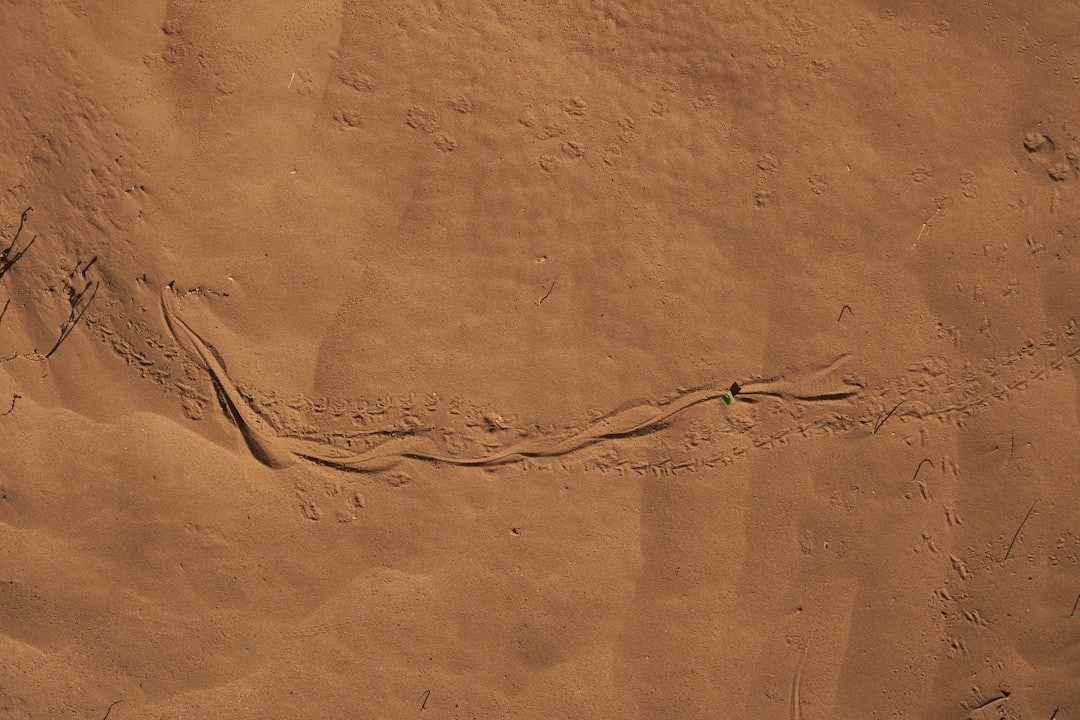The Drake Passage, a body of water that separates South America from Antarctica, is renowned for its tumultuous seas and unpredictable weather. This narrow stretch of ocean, often regarded as one of the most challenging maritime routes in the world, has captured the imagination of explorers, scientists, and adventurers alike. Its significance extends beyond mere geography; it serves as a vital conduit for marine life and plays a crucial role in global oceanic currents.
The passage is not just a physical barrier but also a symbol of the spirit of exploration and the quest for knowledge about the planet’s most remote regions. Navigating the Drake Passage is an adventure that tests the mettle of even the most seasoned sailors. The waters are notorious for their rough conditions, with waves that can reach staggering heights and winds that can whip up unexpectedly.
Despite these challenges, the passage remains a popular route for those seeking to explore the pristine wilderness of Antarctica. The allure of its icy landscapes and unique wildlife draws countless travelers each year, eager to experience firsthand the raw beauty and power of nature in one of the last great frontiers on Earth.
Key Takeaways
- The Drake Passage is a treacherous stretch of water that connects the Atlantic and Pacific Oceans, known for its challenging weather and strong currents.
- Located between South America’s Cape Horn and the South Shetland Islands of Antarctica, the Drake Passage spans approximately 600 miles in width.
- The Drake Passage is notorious for its unpredictable and harsh weather conditions, including strong winds, high waves, and rapidly changing temperatures.
- The Drake Passage has a rich history of exploration, with famous expeditions by renowned explorers such as Sir Francis Drake and Ernest Shackleton.
- The Drake Passage is home to diverse wildlife, including penguins, seals, and whales, and offers breathtaking natural beauty for those brave enough to navigate its waters.
The geographical location and distance of the Drake Passage
The Drake Passage is situated between Cape Horn at the southern tip of South America and the Antarctic Peninsula. This strategic location makes it a critical junction for maritime traffic heading to and from Antarctica. Spanning approximately 800 kilometers (about 500 miles) at its widest point, the passage connects the Atlantic and Pacific Oceans, facilitating not only exploration but also scientific research and commercial shipping.
Its geographical significance cannot be overstated, as it serves as a gateway to one of the most ecologically diverse regions on the planet. The distance across the Drake Passage varies depending on the specific route taken, but it typically measures around 600 kilometers (370 miles) from the southernmost point of South America to Antarctica. This relatively short distance belies the formidable challenges posed by its waters.
The passage is often characterized by strong currents and shifting weather patterns, making it a formidable barrier for vessels attempting to traverse it. The geographical features surrounding the passage, including islands and underwater topography, further complicate navigation, adding to its reputation as a treacherous maritime route.
Weather and climate challenges in the Drake Passage

The weather in the Drake Passage is notoriously unpredictable, with conditions that can change rapidly within a matter of hours. Sailors often describe it as experiencing all four seasons in a single day. The region is influenced by various climatic factors, including the cold Antarctic air masses and warmer winds from the north, creating a volatile environment that can lead to sudden storms and rough seas.
These weather patterns pose significant challenges for those attempting to navigate through the passage, requiring careful planning and respect for nature’s power. The climate challenges are not limited to just wind and waves; fog and low visibility can also be common occurrences in the Drake Passage. This can make navigation particularly difficult, especially for vessels that rely on visual cues or traditional navigation methods.
Additionally, temperatures can plummet dramatically, especially during winter months, leading to icy conditions that can affect both crew safety and vessel performance. Understanding these weather patterns is crucial for anyone planning a journey through this formidable stretch of water.
Historical significance and exploration of the Drake Passage
| Expedition | Year | Significance |
|---|---|---|
| Francis Drake’s voyage | 1578-1580 | First Englishman to navigate the passage |
| James Cook’s expedition | 1773-1774 | First to cross the Antarctic Circle and explore the passage |
| Scientific exploration | 20th century | Contributed to understanding of ocean currents and marine life |
The Drake Passage has a rich history steeped in exploration and discovery. Named after Sir Francis Drake, who was one of the first Europeans to navigate these waters in the late 16th century, the passage has been a focal point for adventurers seeking to chart unknown territories. Drake’s voyage was not only significant for its navigational achievements but also for its contributions to European knowledge about the southern hemisphere.
His explorations paved the way for future expeditions that would further unveil the mysteries of Antarctica. Throughout history, many notable explorers have traversed the Drake Passage, each contributing to our understanding of this remote region. In the 19th century, figures like James Cook and Ernest Shackleton embarked on daring voyages that would solidify their legacies as pioneers of polar exploration.
Their journeys through these treacherous waters were marked by incredible feats of endurance and resilience, often facing life-threatening conditions in pursuit of scientific knowledge and adventure. The historical significance of the Drake Passage is not merely in its geographical challenges but also in its role as a catalyst for human exploration and discovery.
Wildlife and natural beauty of the Drake Passage
The Drake Passage is not only known for its challenging conditions but also for its stunning natural beauty and rich biodiversity. The waters are teeming with marine life, including various species of whales, seals, and seabirds that thrive in this unique ecosystem. The nutrient-rich waters support an abundance of krill, which serves as a vital food source for many marine species.
Observing these creatures in their natural habitat is one of the highlights for travelers crossing the passage, offering a glimpse into a world largely untouched by human activity. In addition to its wildlife, the landscapes surrounding the Drake Passage are breathtakingly beautiful. Towering icebergs, dramatic cliffs, and pristine glaciers create a stunning backdrop that captivates all who venture into this remote region.
The interplay of light on ice and water can produce mesmerizing visual displays, particularly during sunrise and sunset when colors dance across the horizon.
Navigational challenges and safety precautions

Navigating through the Drake Passage presents numerous challenges that require careful consideration and preparation. The combination of strong currents, unpredictable weather patterns, and shifting ice can create hazardous conditions for even experienced mariners. Vessels must be equipped with reliable navigation systems and experienced crews who understand how to interpret weather forecasts and sea conditions accurately.
The importance of thorough planning cannot be overstated; understanding potential hazards along the route is essential for ensuring safety during transit. Safety precautions are paramount when traversing the Drake Passage. Mariners are advised to carry comprehensive safety equipment, including life rafts, emergency beacons, and first aid kits.
Additionally, maintaining constant communication with other vessels and monitoring weather updates can provide critical information that may influence navigation decisions. Training in emergency procedures is also essential; crew members should be well-versed in how to respond to various scenarios that may arise during their journey through these challenging waters.
Tips for preparing for a journey through the Drake Passage
Preparing for a journey through the Drake Passage requires careful planning and consideration of various factors. First and foremost, travelers should ensure they are physically prepared for potential challenges posed by rough seas. This may involve taking seasickness medication or participating in training sessions designed to acclimate individuals to maritime conditions.
Understanding personal limits and being mentally prepared for possible discomfort can significantly enhance the overall experience. In addition to physical preparation, travelers should also invest time in researching their chosen vessel and crew. Selecting an experienced operator with a proven track record in navigating the Drake Passage can make all the difference in ensuring a safe and enjoyable journey.
Furthermore, packing appropriate clothing is crucial; layers are recommended to accommodate fluctuating temperatures while waterproof gear is essential for protection against splashes or rain. By taking these steps, travelers can maximize their enjoyment while minimizing risks associated with this remarkable maritime adventure.
Modern technology and navigation aids for crossing the Drake Passage
Advancements in technology have significantly improved navigation through the Drake Passage over recent years. Modern vessels are equipped with sophisticated navigation systems that utilize GPS technology, radar, and sonar to provide real-time information about sea conditions and potential hazards. These tools enhance situational awareness for crews navigating these challenging waters, allowing them to make informed decisions based on accurate data.
In addition to navigation systems, communication technology has also evolved dramatically. Satellite communications enable vessels to stay connected with shore-based support teams and other ships in the area, facilitating timely updates on weather conditions or emergencies. This interconnectedness enhances safety by allowing crews to share information quickly and efficiently.
As technology continues to advance, it plays an increasingly vital role in ensuring safe passage through one of the world’s most formidable maritime routes.
The impact of climate change on the Drake Passage
Climate change has begun to exert its influence on the Drake Passage, with significant implications for both marine ecosystems and navigation patterns. Rising ocean temperatures have been observed in this region, leading to shifts in species distribution as marine life adapts to changing conditions. These alterations can disrupt established food chains and impact biodiversity within this delicate ecosystem.
Moreover, climate change has contributed to increased glacial melting in Antarctica, resulting in rising sea levels and altered ocean currents. These changes can affect navigational routes through the passage, potentially making them more treacherous due to shifting ice formations or unpredictable weather patterns. Understanding these impacts is crucial for future explorers and researchers seeking to navigate this vital waterway while preserving its ecological integrity.
Famous expeditions and voyages through the Drake Passage
Throughout history, numerous famous expeditions have traversed the Drake Passage, each leaving an indelible mark on our understanding of polar exploration. One notable figure is Ernest Shackleton, whose ill-fated Endurance expedition in 1914 became legendary due to its harrowing tale of survival against overwhelming odds. Shackleton’s journey through these treacherous waters exemplified human resilience and determination in pursuit of exploration.
Another significant expedition was led by Sir James Clark Ross in 1839-1843 when he conducted extensive scientific research in Antarctica while navigating through the Drake Passage. His contributions laid foundational knowledge about Antarctic geography and geology that continues to inform contemporary research efforts today. These expeditions serve as reminders of humanity’s enduring spirit of exploration while highlighting both triumphs and challenges faced by those who dare to venture into this remote region.
The allure and adventure of navigating the Drake Passage
The allure of navigating the Drake Passage lies not only in its breathtaking landscapes but also in its rich history of exploration and discovery. For adventurers seeking an authentic experience amidst nature’s raw power, crossing this formidable stretch of water offers unparalleled opportunities for connection with both wildlife and fellow travelers alike. Despite its challenges—unpredictable weather patterns, rough seas—those who embark on this journey often find themselves transformed by their experiences.
As explorers continue to traverse these waters today—armed with modern technology yet inspired by centuries-old tales—the spirit of adventure remains alive within each crossing through this iconic passageway between continents. The Drake Passage stands as a testament to humanity’s enduring quest for knowledge about our planet while reminding us all of nature’s beauty—and unpredictability—that awaits beyond every wave.
The Drake Passage, a body of water located between the southern tip of South America and Antarctica, is renowned for its challenging navigation conditions and significant role in global ocean circulation. For those interested in exploring more about the geographical and navigational aspects of this region, a related article can be found on MyGeoQuest. This article delves into the intricacies of the Drake Passage, including its distance and the unique challenges it presents to mariners. To read more about this fascinating topic, visit the article on MyGeoQuest.
WATCH HERE: Drake Passage: Earth’s Deadliest Waters Revealed
FAQs
What is the Drake Passage?
The Drake Passage is the body of water between the southern tip of South America and the northern tip of the Antarctic Peninsula. It connects the Atlantic and Pacific Oceans.
How wide is the Drake Passage?
The Drake Passage is approximately 800 kilometers (500 miles) wide at its narrowest point.
What is the distance across the Drake Passage?
The distance across the Drake Passage, from Cape Horn in South America to the South Shetland Islands near the Antarctic Peninsula, is approximately 800 kilometers (500 miles).
How long does it take to cross the Drake Passage?
The time it takes to cross the Drake Passage can vary depending on weather conditions and the type of vessel being used. On average, it takes about 2-3 days for a ship to cross the Drake Passage.
Why is the Drake Passage known for its rough seas?
The Drake Passage is known for its rough seas due to the convergence of the Atlantic, Pacific, and Southern Oceans, as well as the lack of any landmass to disrupt the strong westerly winds that circle the Antarctic continent.
What is the significance of the Drake Passage?
The Drake Passage is significant because it is the shortest and most direct route for ships traveling between the Atlantic and Pacific Oceans. It also plays a crucial role in the circulation of ocean currents and the exchange of marine life between the two oceans.
